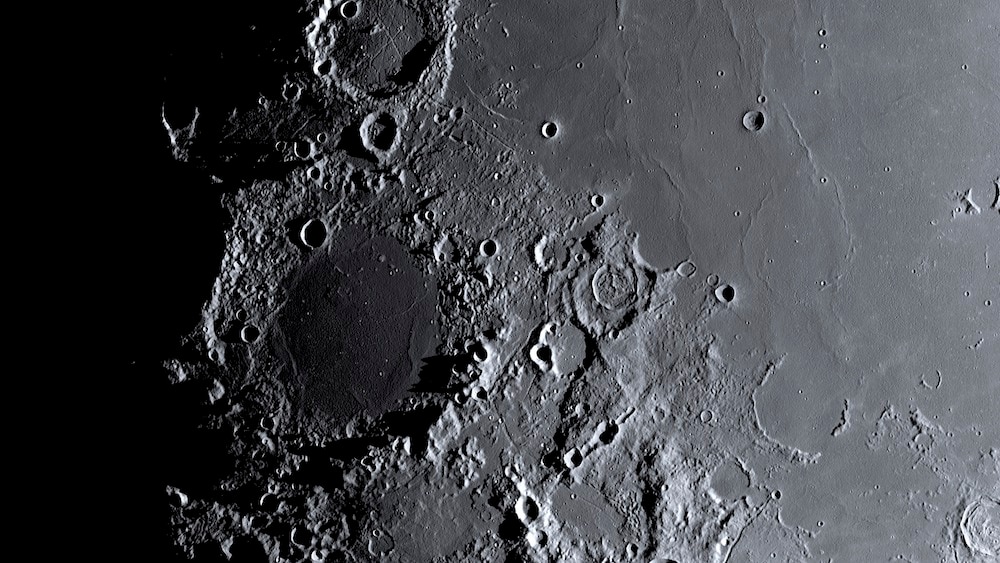Create a free profile to get unlimited access to exclusive videos, sweepstakes, and more!
Wait. If the Moon has no magnetic field, then what’s the magnetic force on its surface?
So maybe that's why lunar ice doesn't melt.

Astronaut Jim Lovell may have never had the chance to set foot on the Moon, both in Apollo 13 and in real life, but if he did, he might have noticed something unusual.
Moon craters are possibly some of the best sources of water ice on what is otherwise a dead piece of rock. These same craters are hiding a mystery, because if that ice has been there for billions of years, unprotected from the solar wind, then why does it refuse to be destroyed? Even being permanently shadowed is not enough to keep incoming solar particles out (at least on the Moon's near side). A magnetic field could offer that level of protection, but the lunar magnetic field is thought to have vanished eons ago. Those craters might be saying something else.
While the Sun never rises above the rims of polar craters on the Moon, because of the Moon’s tilt, that is not the only thing keeping their water (which possibly came from comet collisions) frozen. They are beyond the reach of sunlight but have still been found to absorb some infrared light from solar wind. Now planetary scientist Lon Hood of the University of Arizona believes remnants of a magnetic field are still around and deflecting solar wind, shielding the icy craters. He recently presented a study at the Lunar and Planetary Science Conference in Houston.
“Anomalies near the south pole are where the solar wind ion flow comes in at a low angle to the surface,” Hood told SYFY WIRE. “This increases their ability to deflect the solar wind. Ion flux into permanently shadowed craters is significantly lessened, helping preserve water ice.”
Not long after the events of Apollo 13 took place, astronauts on the Apollo 15 and 16 missions that landed in 1971 and 1972 started to suspect that the Moon might have still held onto some of its magnetism. Surface measurements revealed magnetic anomalies — areas that showed unexpected magnetic strength. There could be thousands scattered across the Moon. Unprotected ice molecules would be attacked by charged solar particles, which would gradually eat away at them over a few million years until there was nothing left. This is known as sputtering erosion. Magnetic fields are probably what is keeping those ions out.
Some of the lunar rocks brought back by Apollo astronauts also revealed magnetism. But how? Earth’s magnetic field is generated by its dynamo, which is powered by the motion of conducive liquid iron, caused by the convection of oil heat, in its outer core. Hotter and less dense fluid rises while cooler fluid sinks. You need a larger body than the Moon for that. However, it is possible that the Moon’s solid mantle activates liquid iron in its core because the axes that the core and the mantle rotate on are slightly different and influenced by tidal forces. There is no mission planned to explore anomalies yet, but Hood wants to send something over.
“We could study these anomalies with a solar wind instrument, which measures the flux of charged particles wherever the instrument is located, he said. “If it is put into a permanently shadowed crater, then it can measure the flux there.”
Whether or not anything is launched on a future Artemis mission to get a better idea of what is going on in these shadowy craters, Hood is also looking to study them in any way possible here on Earth. He is looking to team up with space plasma physicists to create simulations of the anomalies that will give more insight into how the solar wind interacts with them and is deflected. Orbiting spacecraft data that is beamed back will be useful for mapping anomalies. Ultimately, though, someone — or something — has to land.
“Future landing missions near the south pole will make direct measurements of the solar wind ion flux,” said Hood.
The Moon is still keeping secrets. Though they won’t be Jim Lovell’s, the next pair of boots on lunar ground may end up stepping right on them.


























